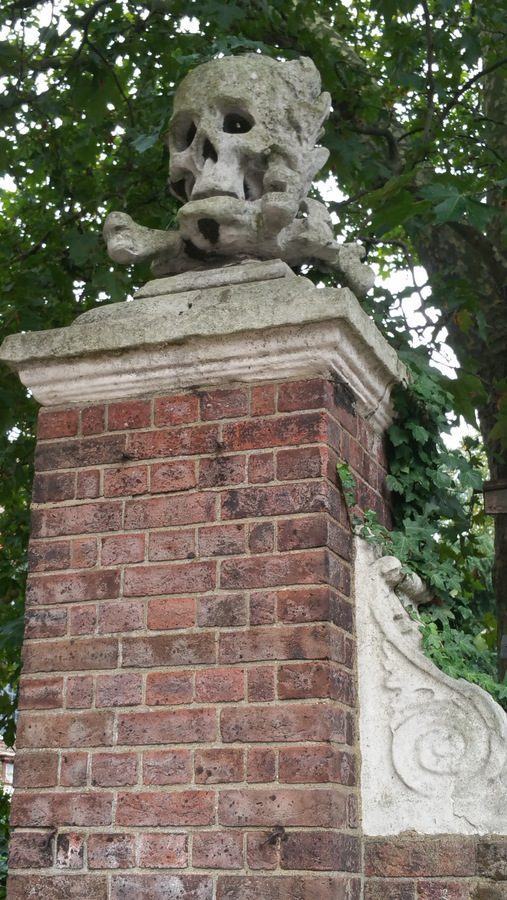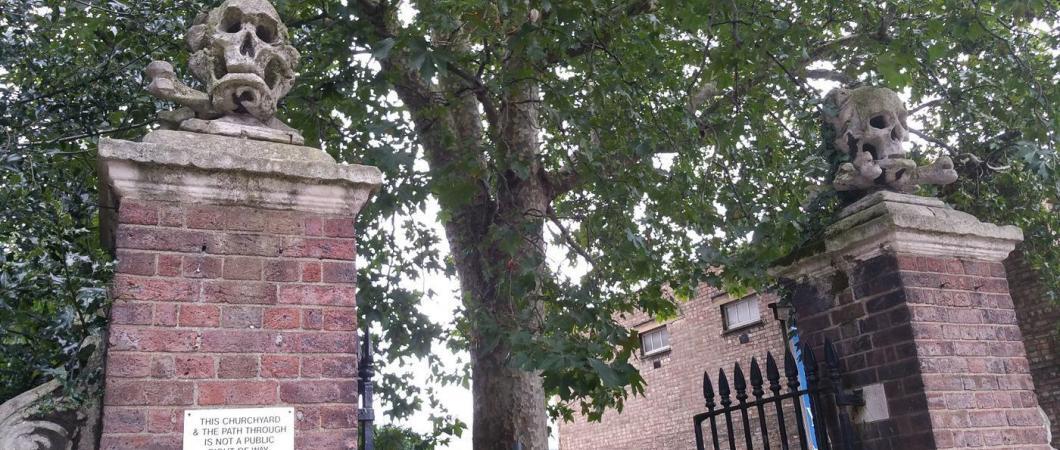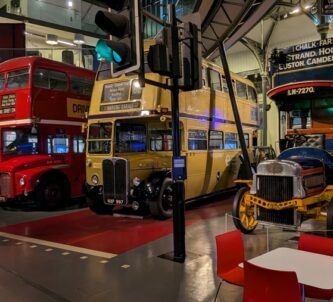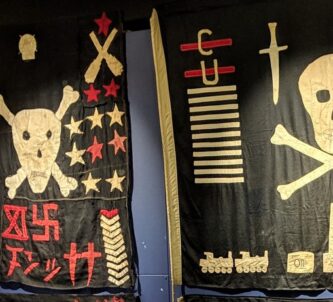There are a number* of popular and academic explanations for the invention of the “Jolly Roger” flag with its skull & crossed bones motif.
However this isn’t usually included among them.
The 14th century (originally) church of St. Nicholas in the parish of Deptford on the south bank of the Thames, just upstream from Greenwich, has two seriously imposing and rather ancient stone carvings on its gateposts – skulls with crossed bones.
Local legend has it that these were the inspiration for the “Jolly Roger”.
The claim is based on the activities of privateers – sort of state-licensed pirates – who were key players in the centuries of maritime war between the French, English, Dutch and Spanish. The theory goes that privateers did not want to advertise their nationality as they crept up on an enemy ship, so they flew their own marks of identification, and since many English privateers came from Deptford (where the Royal Navy ship & victualling yards were) they chose a well-known local symbol that would strike fear into the hearts of their victims.

The trouble is, I can’t find reference to many privateers/pirates coming from Deptford – at least, not famous ones. It sounds plausible, but I suspect the basis of the Jolly Roger comes from multiple cultures, designs and historic circumstances that just merged slowly over time.
Also, as the notes in St. Nicholas itself point out, if you look closely at the skulls, they are adorned with laurel leaves, symbolising ‘everlasting life’.
Do you have any knowledge/expertise on this?








Hi there, I can offer an explanation as to why this claim is made…and why st Nicholas IS in fact the inspiration for the skull and crossbones. Though…it’s not because of this. In fact, what I am about to tell you is the inspiration for this. It goes back to the byzantine empire under the reign of Otto II. His to be wife Theophanu had St Nicholas as her patron Saint. And in her travels across the land, on her way to be married to Otto II, she brought popularity to st nick as a Saint there. Prior to this, st nick was already established as the patron Saint of seafarers, after his apparition lowered the sails, set the mast upright, and calmed the seas of a floundering ship, who hands prayed to the Bishop of Meira for protection. Thus, a later gang of Byzantine raiders, sailed to Meira (in Turkey), sacked the church where St Nicholas was entombed, and stole his bones as relics. However, these were split up. Some ended up in Venice, while the skull and upper leg bones went to Bari, where they are kept as relics in dedicated churches there. Thus the skull and crossbones relates to the byzantine pirates stealing these relics to use as protection, from the patron Saint dedicated to the protection of seafarers, during their raiding activities. With the stonework here, on the British church, being a reflection of this story. And then reflected on the flags of pirate ships all over in the form of the Jolly Roger. This also relates to the raiding of Skull & Bones Society at Yale University. So it was always the bones of Santa Claus on your most favorite pirate flag!
Thanks JC. Very interesting! 🙂